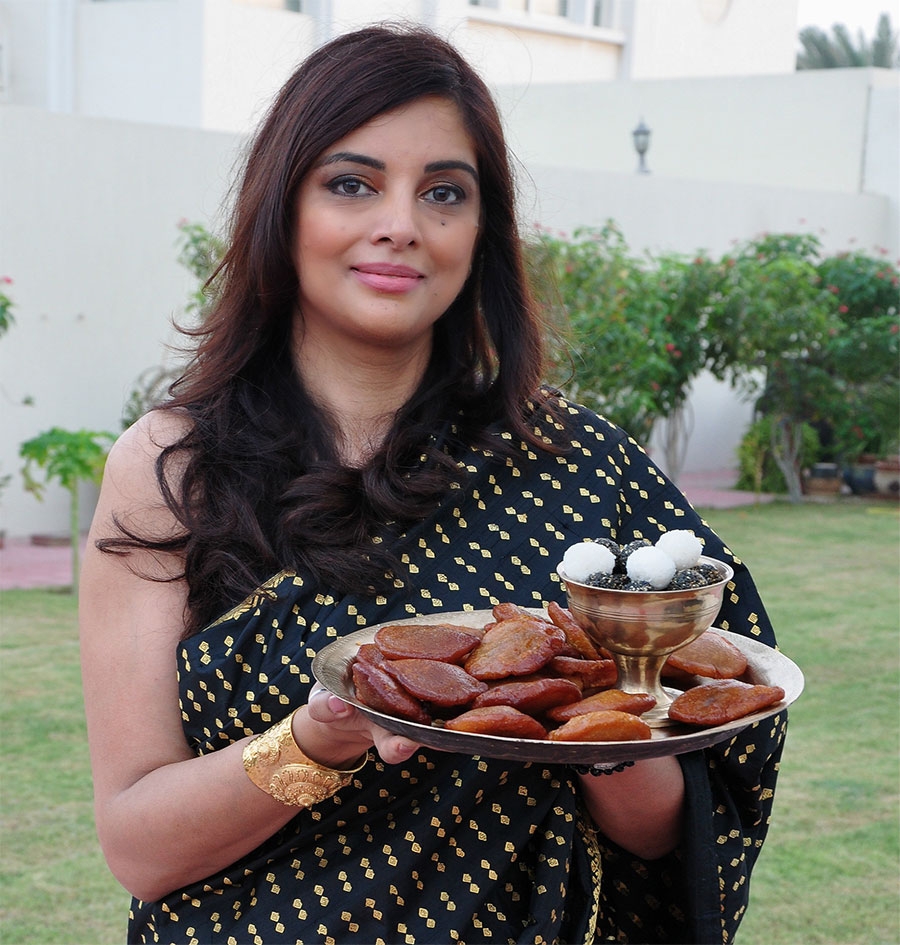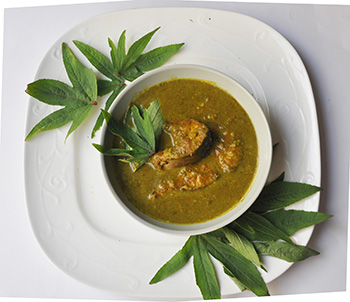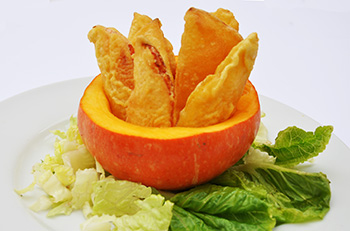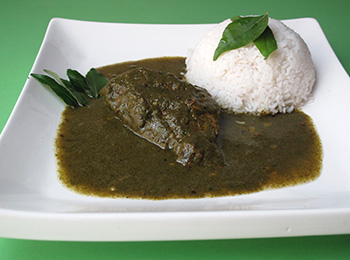
“No one who cooks, cooks alone. Even at her most solitary, a cook in the kitchen is surrounded by generations of cooks past, the advice and menus of cooks present, the wisdom of cookbook writers,” said Laurie Colwin, an American author. This has always been true of me. My cooking is inspired by that of my grandmothers as well as my mother and aunts.
When I moved to the United Arab Emirates (UAE), 22 years ago, cooking any traditional Assamese dishes would mean a telephone call back home. However, the problem I faced while trying to replicate any traditional dish, is that no one had exact measurements for any of the recipes. This made me start documenting each recipe with proper measurements and instructions until it tasted exactly like it would if it was cooked in my grandmother’s kitchen, back in Assam. Sourcing ingredients was another problem but it was a boon to find that Southeast Asian supermarkets were well stocked and 80 per cent of the ingredients were available in the UAE. The rest had to be brought by visiting friends and relatives.
These tried and tested traditional recipes were included in the cooking classes I was conducting and they were greatly appreciated by people from different parts of the world. A lot of interest was generated in Assamese cuisine after the Bhut Jalakia chilli was certified as the world’s hottest chilli pepper by the Guinness World Record. Any dish which used the famous chilli as an ingredient was always met with a lot of interest and enthusiasm by those who had never experienced it. According to Maan Hamzi, a Lebananese food writer, “Bhut Jalakia is by far the most thrilling thing I have ever eaten.” Other dishes such as Fish tenga or Tangy fish curry, pitika or mashed vegetables and pitha or rice cakes are greatly enjoyed by anyone tasting Assamese cuisine for the first time. They are pleasantly surprised to find how different it is from other Indian dishes that they have tasted and that it is not as rich or heavy as the curry-based dishes served in restaurants offering Indian fare. Assamese cuisine is greatly admired for its fresh ingredients, minimal use of oil, and the use of fresh herbs and vegetables, especially by the health conscious people.
I soon discovered that there was a growing demand for more Assamese recipes, especially written in English so that they could be understood by a global audience. This led to the start of the Facebook page on Assamese cuisine and recipes. Today, it boasts over 40,000 members from all parts of the globe. The page became popular with both Assamese residing in Assam as well as the Assamese diaspora. It was interesting to find that the Assamese themselves were curious about dishes from their own cuisine and wanted to know more about them, in addition to foreigners who were intrigued by the food.
It is imperative to apply imagination to a dish, to make it visually pleasing as well as combine dishes in a way that is more appealing to a wider audience. For example, most people in the cooking class find the traditional mashed potatoes combined with fried fish a more palatable combination as opposed to serving the same with rice and lentils which is a more traditional practice. Taste, to a great extent, is personal as well as culturally defined, and modern tastes have been influenced by a variety of factors that cannot be separated from the equation. However, it is important to keep the recipes close to the traditional as far as possible while giving them a touch of modernity.
A love of food is something that binds us all, regardless of culture or ethnic background. Fortunately for me, I have friends who love to cook as much as I do; the joy of eating a meal cooked by friends from a different country is quite unparalleled .It is an immersion into food culture and a global adventure. Cooking for me is more than a passion, it´s a lifestyle. There is sheer magic in this simple ritual that bonds people together. It not only creates awareness of people and their cultures or the perfect setting for conversations, it connects us to each other.
Sharmin Pasha is an Assamese writer and stylist who loves to cook. Her workshops on Assamese cuisine emphasises on indigenous ingredients and traditional cooking methods. She is based in Dubai

Tangy Fish curry with Roselle Leaves
Ingredients
500 gram river fish, cut into steaks
100 gram fresh Roselle leaves
1 ½ tsp turmeric powder
¼ tsp fenugreek seeds
1-2 green chilies
2 tbsp mustard oil
500 ml hot water
1 medium potato
Extra oil for frying the fish
Salt according to taste
Method:
- Sprinkle the fish with a teaspoon turmeric powder and salt and leave to marinate for 20 minutes.
- Meanwhile, separate the Roselle leaves from the stalk. Wash several times in fresh water to remove any sand or grit. Drain and chop finely.
- Boil and peel the potatoes. Mash with a fork and keep aside.
- Heat some oil in a frying pan set over a medium heat and fry the fish, until lightly browned. Drain on absorbent kitchen paper and set aside.
- In a separate pan heat two spoons of mustard oil over a medium heat.
- To the hot oil, add the fenugreek seeds. When they begin to splutter add the green chillies.
- Stir in the Roselle leaves and cook for a few minutes, or until just wilted.
- Add the mashed potato and half teaspoon of turmeric powder. Stir well to mix.
- Pour in the hot water. Add salt according to taste and cook over medium heat for a few minutes or until the leaves are cooked through.
- Gently add the fried fish. Add extra water if required. Simmer a few minutes or until curry thickens slightly. Remove from heat and serve with steamed rice.
Note: If Roselle leaves are not available, sour spinach can be used as a substitute.

Pumpkin Fritters
Ingredients:
400 gram red pumpkin, peeled and sliced
50 gram rice flour
150 gram gram flour
2 g baking soda
250 ml water, or as needed
500 ml mustard or vegetable oil, to deep fry
Salt according to taste
Method:
- In a mixing bowl, combine the flours, salt and baking soda.
- Add water and whisk continuously, until a thick batter forms.
- Heat the oil in a deep frying pan until a breadcrumb sizzles and turns brown when dropped into it.
- Dip pumpkin slices in the batter. Shake off excess batter, then lower straight into the hot oil. Fry a few at a time, until crisp and lightly golden.
- Remove from the heat using a slotted spoon and set aside to drain on kitchen paper.
- Serve immediately.

Fish in curry leaf
Ingredients
500 gram fish, preferably cat fish
200 gram tender curry leaves
2 tsp turmeric powder
4 cloves garlic, chopped
1 tsp garlic paste
½ tsp black pepper paste
1 tsp cumin powder
2 green chilies, slit
3 tbsp mustard oil
250 ml warm water
Extra oil for frying the fish
Salt to taste
Method:
- Rinse the fish, pat dry and rub in a little turmeric and some salt. Set aside to marinate.
- Clean, wash and grind the curry leaves to a smooth paste.
- Heat oil in a frying pan until smoking. Reduce heat to medium and fry the fish pieces, until cooked through. Remove from the pan and set aside.
- Heat two tablespoons of the mustard oil in a separate pan.
- Add the chillies and chopped garlic .Sauté slightly then add garlic paste and the pepper paste and stir fry until aromatic.
- Add the curry leaves paste and turmeric powder. Sauté until oil separates.
- Pour in the water, simmer few minutes, or until the mixture thickens slightly.
- Gently add the fish to the pan, simmer further five minutes.
- Remove and serve with plain rice.

